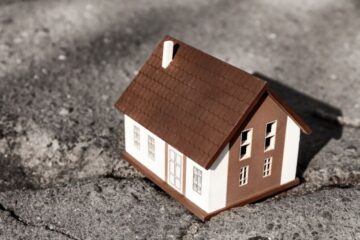How to Minimize Flood Damage

A flood is the accumulation of excess water on land that’s normally dry. Floods can occur anywhere: in the mountains, in the desert, on the coast, or inland. Floods are the most common natural disaster in the United States, though many people don’t even realize that they’re at risk—it takes only an inch or two of water to cause significant damage to a home.
To determine your specific flood risk, look at flood maps of your area. These are available at FEMA’s Map Service Center, at 800.358.9616, or online at msc.fema.gov. Flood maps for a specific property are usually a few dollars apiece.
Types of Floods
Floods happen when bodies of water overflow or snow thaws, causing runoff. They can occur suddenly, without warning, or build slowly over days. Types of floods include:
- Flash flood: A sudden rise of water that carries with it mud, rocks, and debris. Flash floods are the most dangerous type of flood, as they can develop within minutes, with little or no warning. They can even happen without the presence of rain or thunder clouds.
- Overland flood: A flood that occurs when water flows over land to reach waterways. The low-lying land around rivers that periodically experiences overland flooding is called a flood plain.
- Flood caused by new development: A flood that stems from poor drainage or soil absorption due to urban development. These floods are an increasing issue as urban areas continue to grow. Though forests and meadows absorb water, roads and buildings do not—and new developments also change the natural drainage of an area, which can cause flooding in the development itself or push flooding to nearby areas.
How to Minimize Flood Damage
To prevent extensive flood damage to your home:
- Elevate your furnace, water heater, and electric panel off of the floor.
- Seal your basement walls with waterproofing compounds to prevent seepage.
- Install check valves in your sewer traps. These prevent flood water from backing up into your drains.
- Check your sump pump. Clean it, test it, and make sure that your discharge hose delivers the water to a well-drained area several feet away from your home.
- Move any valuables to a higher location.
- Elevate appliances, especially in the basement. Put washers, dryers, and freezers up on wood blocks to keep their motors dry.
What to Do During a Flood
During a flood, listen to the radio or watch TV for updates on the weather, evacuation advisories, and road blockages. If you suspect flash flooding, move to higher ground immediately. If local authorities advise you to evacuate:
- Have a full tank of gas.
- Move your furniture to the upper levels of your home.
- Shut off all your utilities.
- Disconnect your electrical appliances.
- Know the right evacuation route—don’t take shortcuts.
- Don’t drive in flooded areas—just 6″ of water can cause your car to stall, and 12″ of water will float most vehicles. If water rises around your car, abandon it and move to higher ground.


